Have you ever tried to inflate a balloon without using your mouth? In this experiment, you can! Create a self-inflating balloon by mixing vinegar and baking soda in an empty pop bottle to create carbon dioxide gas. If you secure a balloon on top of this bottle, it will capture the gas and blow the balloon up!
Learn how to re-create this simple science experiment at home by reading the post below.
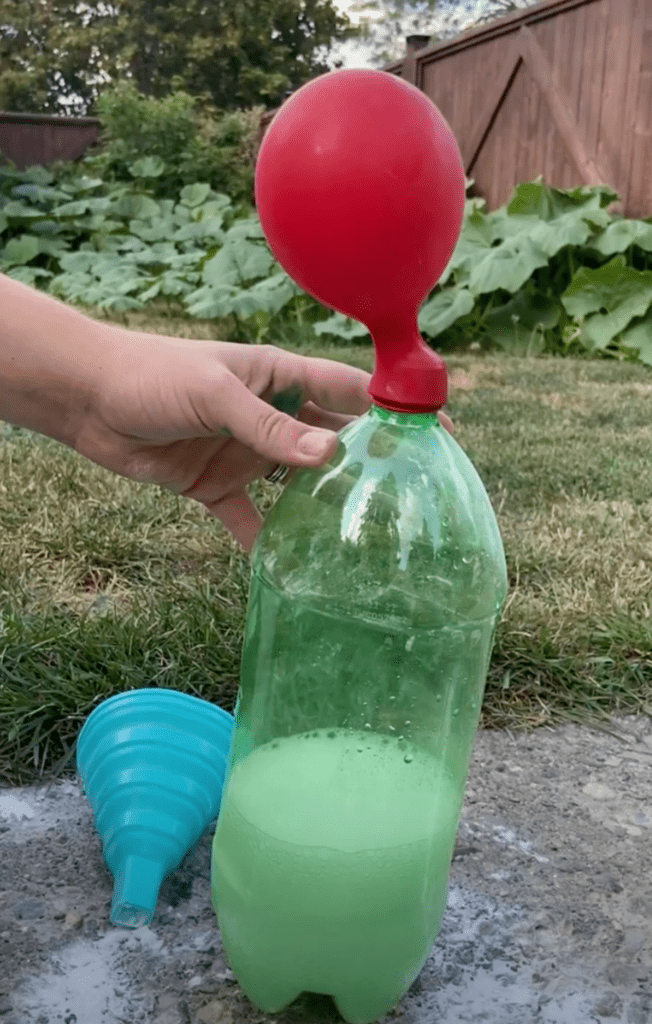
What is the self-inflating balloon experiment?
This is an excellent activity for young scientists – Especially those who love learning outside! Learn why we think science for kids is so important in this post.
Primary Connections explains that when you mix vinegar (an acid) and baking soda (a base), you create a carbon dioxide gas. Now, as we saw in our volcano experiment with the same chemical reaction, this gas will cause a bubbling eruption that flows out of the container.
But, when you affix a balloon on top of the bottle, the gas has nowhere to go… Except for the balloon! Usually, we are using the air from our lungs to fill a balloon when we blow it up. This air is also a gas. But in this experiment, we are trapping carbon dioxide inside of the balloon to create a self-inflating balloon!
Download a scientific method worksheet before starting
This is totally optional, but you may want to head over to my TpT store and download the Scientific Method worksheet for free. This way, you can emphasize key learning moments while introducing your preschooler to the scientific method. By practicing this, they will become confident in their ability to hypothesize, test, and evaluate experiments!
Plus, if you write down the step-by-step instructions and tuck this away in a folder for later, they can re-create the same activity another time.
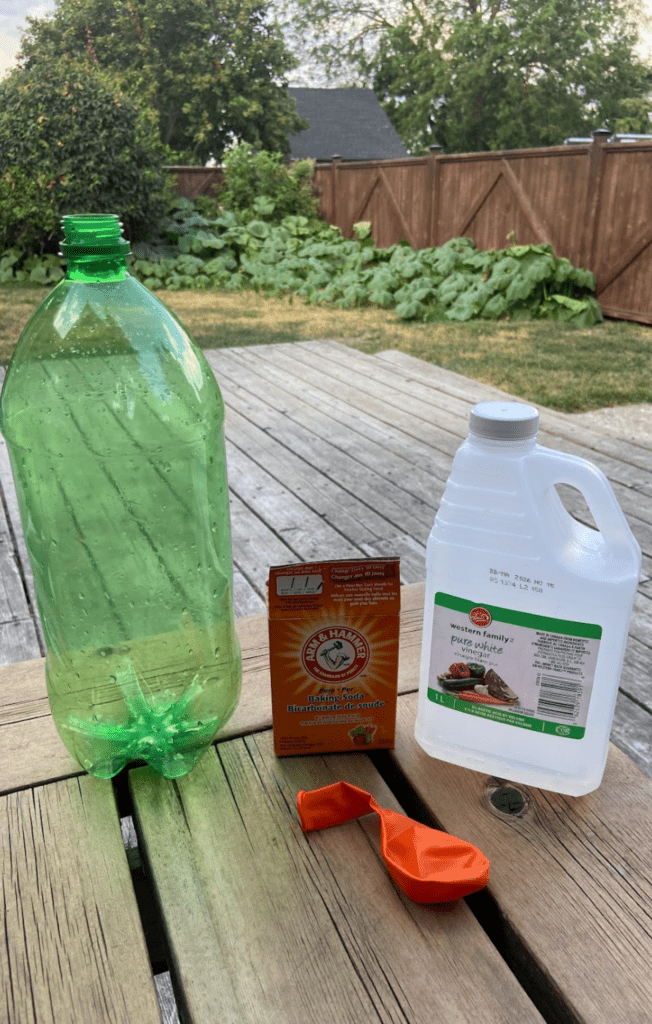
Making a self-inflating balloon: What you’ll need
All of the materials required for this experiment are common household staples! Since you’ve got to act quickly to capture the gas, this experiment is best suited for older children (or requires adult assistance).
Here are the materials you will need:
- An empty 2L pop or water bottle
- 2 tbsp Baking soda
- 1 and a half cups vinegar
- Balloon
- Either two funnels or a funnel and a spoon
*This amount will blow up the balloon a little bit – I ended up adding more vinegar to see how much I could inflate my balloon!
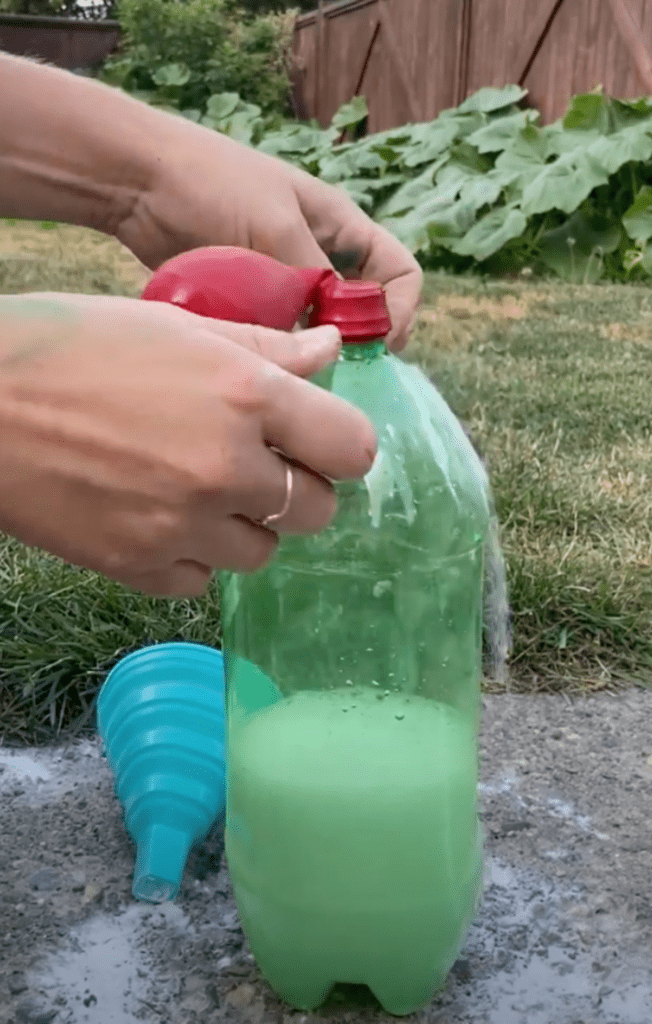
How to make a self-inflating vinegar balloon
This classic science experiment is super easy. But, be sure to act quickly because as soon as the baking soda falls into the vinegar, the chemical reactions will start!
Here are the step-by-step instructions
- Remove the lid from your bottle
- Place a funnel into the top of the bottle for the liquid
- Pour the vinegar into the bottle first, then remove the funnel
- Either place a second funnel in or use a spoon to pour the baking soda in
- Quickly and carefully stretch the balloon over the top of the bottle
- Watch carefully! The chemical reaction between the two substances will make the balloon inflate
That’s it! The kids will have so much fun watching the self-inflating balloon science… But be careful to take the balloon off before it bursts! Otherwise, you’ll have a huge mess to clean.
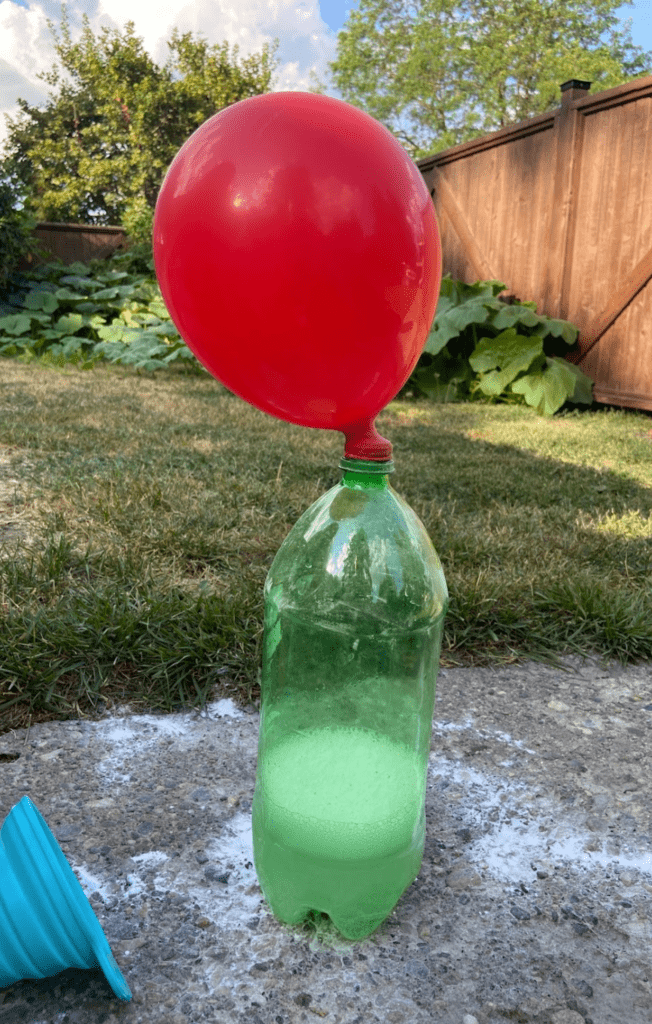
Conclusion
That’s all there is to this self-inflating balloon experiment! Pretty simple, hey? With just balloons, baking soda, vinegar, and an empty bottle, you can create a self-blowing balloon in just a few minutes. This happens because the acid (vinegar) and the base (baking soda) create a chemical reaction inside the water bottle. Since the balloon prevents the gas from escaping, the carbon dioxide flows into the balloon, making it appear to magically inflate all by itself.
Have you tried this self-inflating balloon science experiment (sometimes also called a ‘vinegar balloon experiment’)? We would love to hear how it went!
Here are some other science experiments you may enjoy
If you’re into science experiments, you and your kids will love these:
- Create a tissue paper butterfly that flaps its wings thanks to static electricity
- Explore how the sun moves while creating beautiful shadow art
More science posts
Searching for more science experiments and science-related activities to do with your little ones? Check out this category to see all of our posts about science for kids!

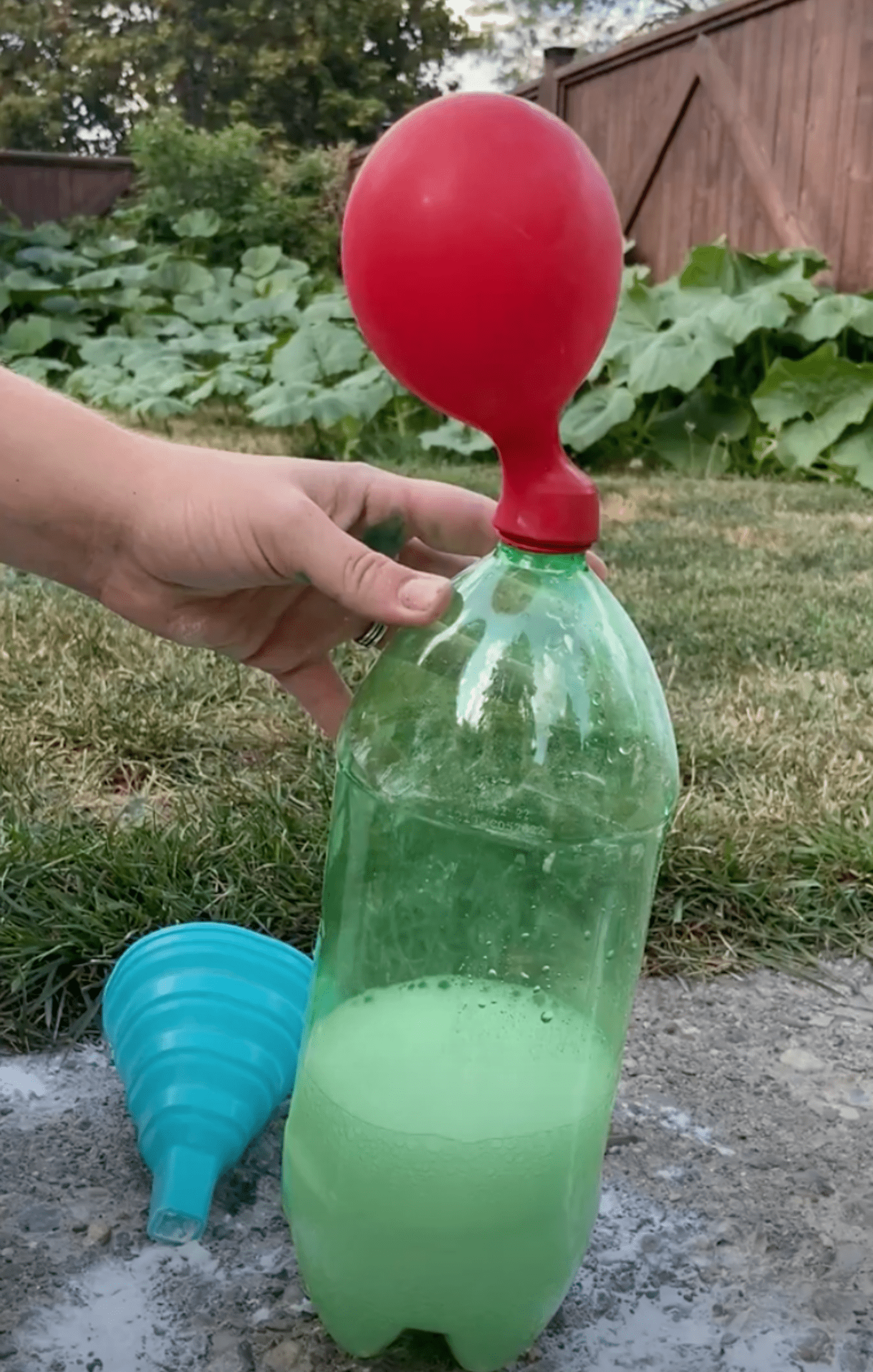
Leave a Reply